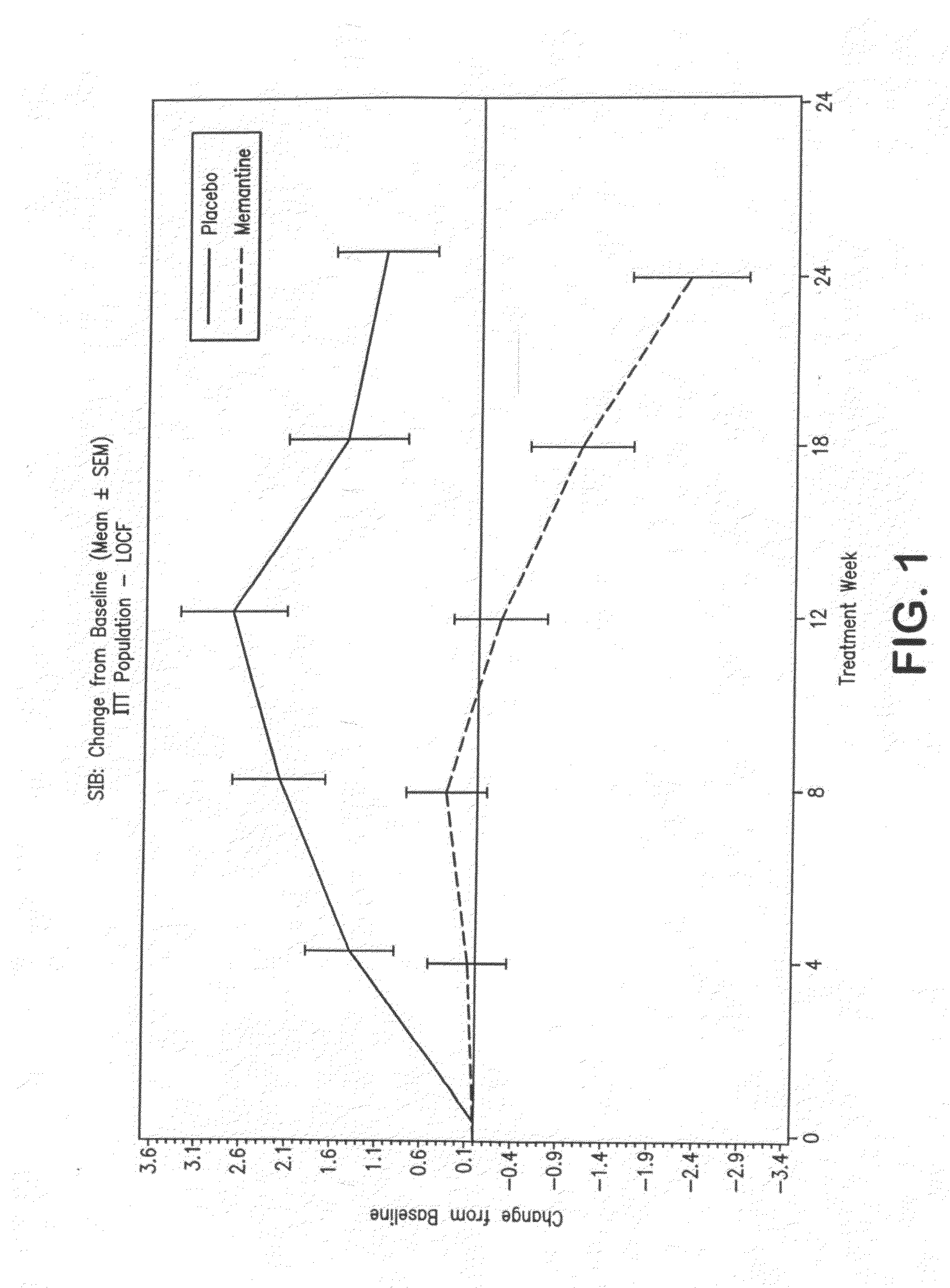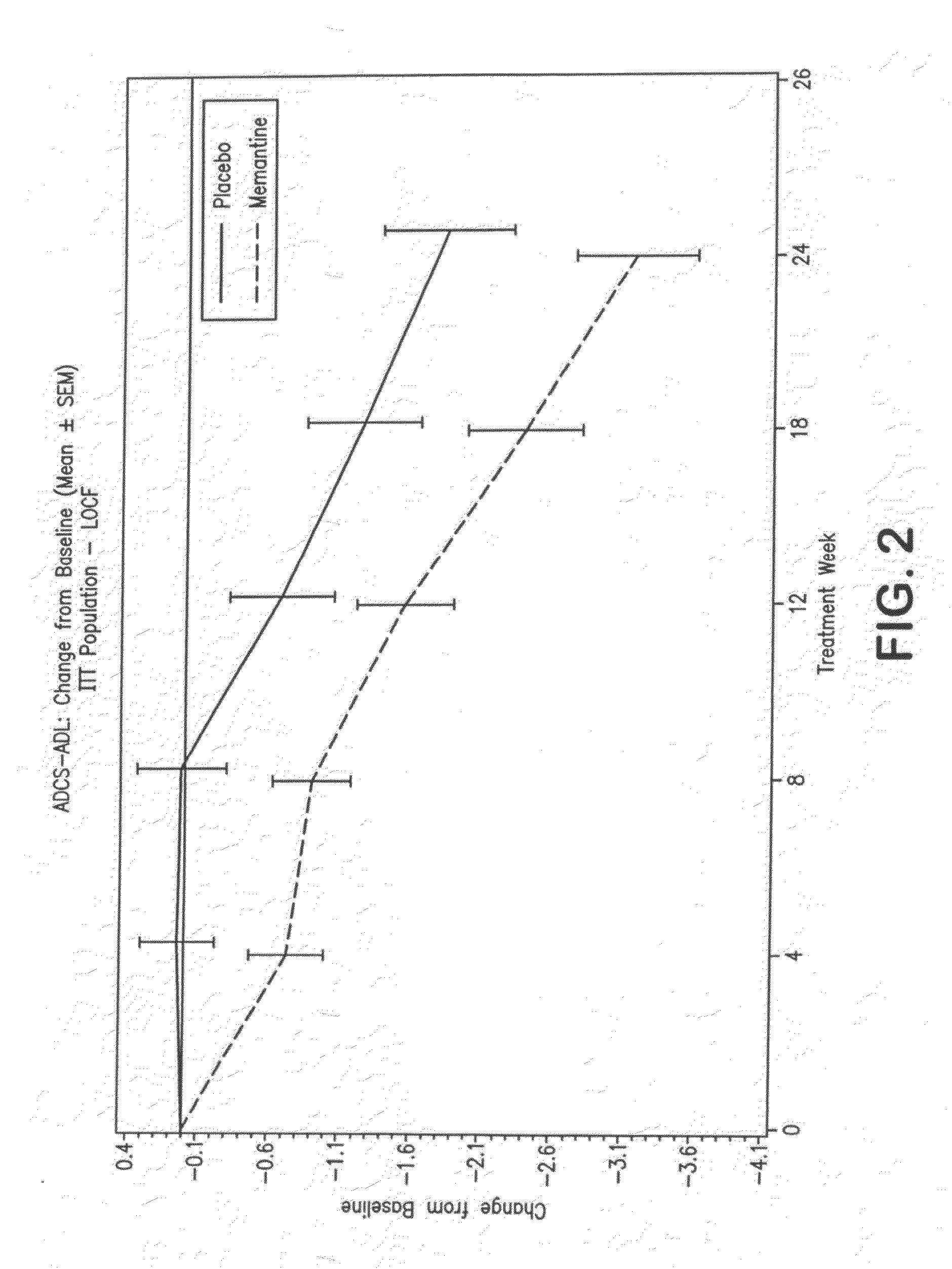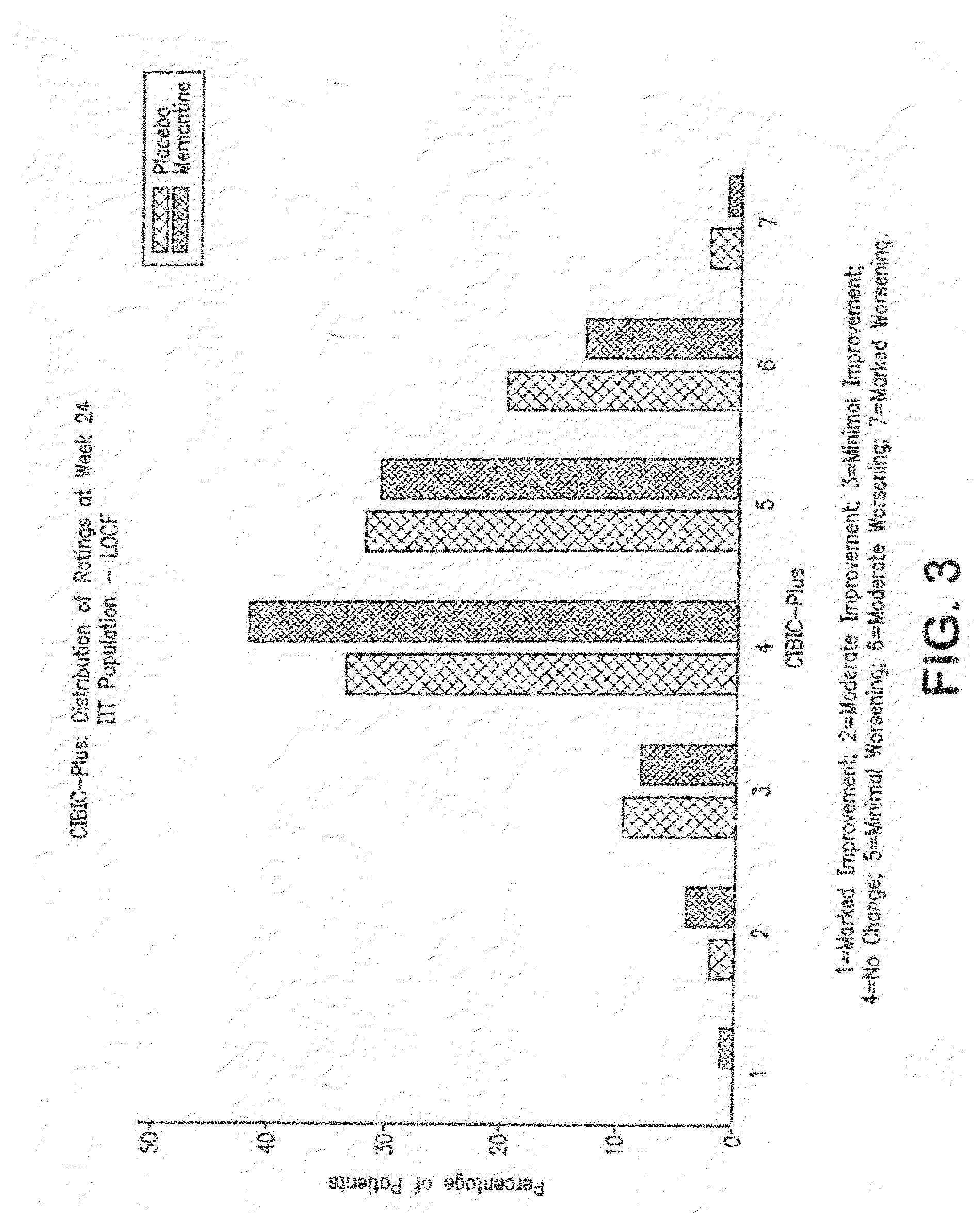Combination therapy using 1-aminocyclohexane derivatives and acetylcholinesterase inhibitors
a technology of acetylcholinesterase and cyclohexane, which is applied in the direction of biocide, cardiovascular disorder, drug composition, etc., can solve the problems of affecting normal synaptic transmission, no treatment that effectively prevents ad or reverses its symptoms and course is currently known, and affecting the normal functioning of synaptic transmission, etc., to achieve the effect of reducing the toxicity of the drug
- Summary
- Abstract
- Description
- Claims
- Application Information
AI Technical Summary
Benefits of technology
Problems solved by technology
Method used
Image
Examples
synthesis example 1
3,3,5,5-Tetramethyl-1-vinylcyclohexanamine hydrochloride (5)
a) Ethyl 2-(3,3,5,5-tetramethylcyclohexylidene)acetate (2)
[0213]To a stirred solution of triethyl phosphonoacetate (49.32 g, 222 mmol) in dry THF (180 ml) under argon Nall (8.8 g, 222 mmol, 60% suspension in mineral oil) was added in small portions while cooling with ice water. Stirring was continued for 1 h at room temperature, then a solution of 3,3,5,5-tetramethylcyclohexanone (30.85 g, 200 mmol) was added over 10 min and the resulting mixture was refluxed for 22 h. It was then poured onto ice (400 g) and the product was extracted with diethyl ether (4×150 ml), and the extracts dried over MgSO4. After solvent evaporation in vacuo an oily residue was distilled at 145° C. (11 mm Hg) to give 36.8 g (86%) of 2 as an oil. 1H NMR (CDCl3, TMS) δ: 0.96 and 0.98 (total 12H, both s, 3,5-CH3); 1.27 (3H, t, CH3-ethyl); 1.33 (2H, m, 4-CH2); 1.95 and 2.65 (total 4H, both s, 2,6-CH2); 4.14 (2H, q, CH2-ethyl) and 5.69 ppm (1H, s, ═C—H)....
synthesis example 2
N,3,3,5,5-Pentamethyl-1-vinylcyclohexylamine hydrochloride (7)
a) Methyl 3,3,5,5-tetramethyl-1-vinylcyclohexylcarbamate (6)
[0217]A mixture of amine hydrochloride 5 (0.25 g, 1.2 mmol) and Na2CO3 (0.73 g, 6.9 mmol) in THF (6 ml) was stirred at room temperature for 1 h. Methyl chloroformate (0.27 ml, 3.45 mmol) was added and the reaction mixture was stirred at room temperature for 15 h. The mixture was diluted with diethyl ether (20 ml), filtered and evaporated to the dryness. The crude product was purified by flash chromatography on silica gel (light petroleum ether-ethyl acetate, 10:1) to give 6 (0.24 g, 87%) as a colorless solid with m.p. 61-63° C. 1H-NMR (CDCl3, TMS) δ: 0.92 and 1.15 (total 12H, both s, 3,5-CH3); 1.00-1.40 (4H, m, 4-CH2 and 2,6-CH); 2.00 (2H, d, 14 Hz, 2,6-CH); 3.62 (3H, s, CH3N); 4.72 (1H, br s, NH); 5.00 and 5.06 (total 2H, both d, 10.5 and 17 Hz, ═CH2) and 5.83 ppm (1H, dd, 10.5 and 17 Hz, ═CH).
b) N,3,3,5,5-Pentamethyl-1-vinylcyclohexylamine hydrochloride (7)
[021...
synthesis example 3
1-Allyl-3,3,5,5-tetramethylcyclohexanamine hydrochloride (11)
a) 1-Allyl-3,3,5,5-tetramethylcyclohexanol (8)
[0219]To a stirred 1 M etheral solution of allyllmagnesium bromide (60 ml, 60 mmol) was added dropwise a solution of 3,3,5,5-tetramethylcyclohexanone (3.86 g, 25 mmol) in dry ether (20 ml). The mixture was stirred for 1 h at ambient temperature and boiled at reflux for 10 min. Then it was cooled with ice water and carefully treated with saturated aqueous NH4Cl (40 ml). The organic layer was separated and washed with water and brine. After drying over anhydrous MgSO4, the solution was concentrated in vacuo. The residue was fractionally distilled at reduced pressure to give 3.5 g (72%) of 8 with b.p. 98-100° C. / 12 mm Hg. NMR (CDCl3, TMS) δ: 0.88 (6H, s, 3,5-CH3eq); 1.20 (6H, s, 3,5-CH3ax); 0.95-1.60 (6H, m, 2,4,6-CH2); 2.15 (2H, d, 7.5 Hz, CH2C═); 4.95-5.30 (2H, m, ═CH2) and 5.65-6.20 ppm (1H, m, ═CH).
b) 1-Allyl-1-azido-3,3,5,5-tetramethylcyclohexane (9) and 1-Methyl-2-(3,3,5,5-t...
PUM
| Property | Measurement | Unit |
|---|---|---|
| temperature | aaaaa | aaaaa |
| volume | aaaaa | aaaaa |
| temperature | aaaaa | aaaaa |
Abstract
Description
Claims
Application Information
 Login to View More
Login to View More - R&D
- Intellectual Property
- Life Sciences
- Materials
- Tech Scout
- Unparalleled Data Quality
- Higher Quality Content
- 60% Fewer Hallucinations
Browse by: Latest US Patents, China's latest patents, Technical Efficacy Thesaurus, Application Domain, Technology Topic, Popular Technical Reports.
© 2025 PatSnap. All rights reserved.Legal|Privacy policy|Modern Slavery Act Transparency Statement|Sitemap|About US| Contact US: help@patsnap.com



